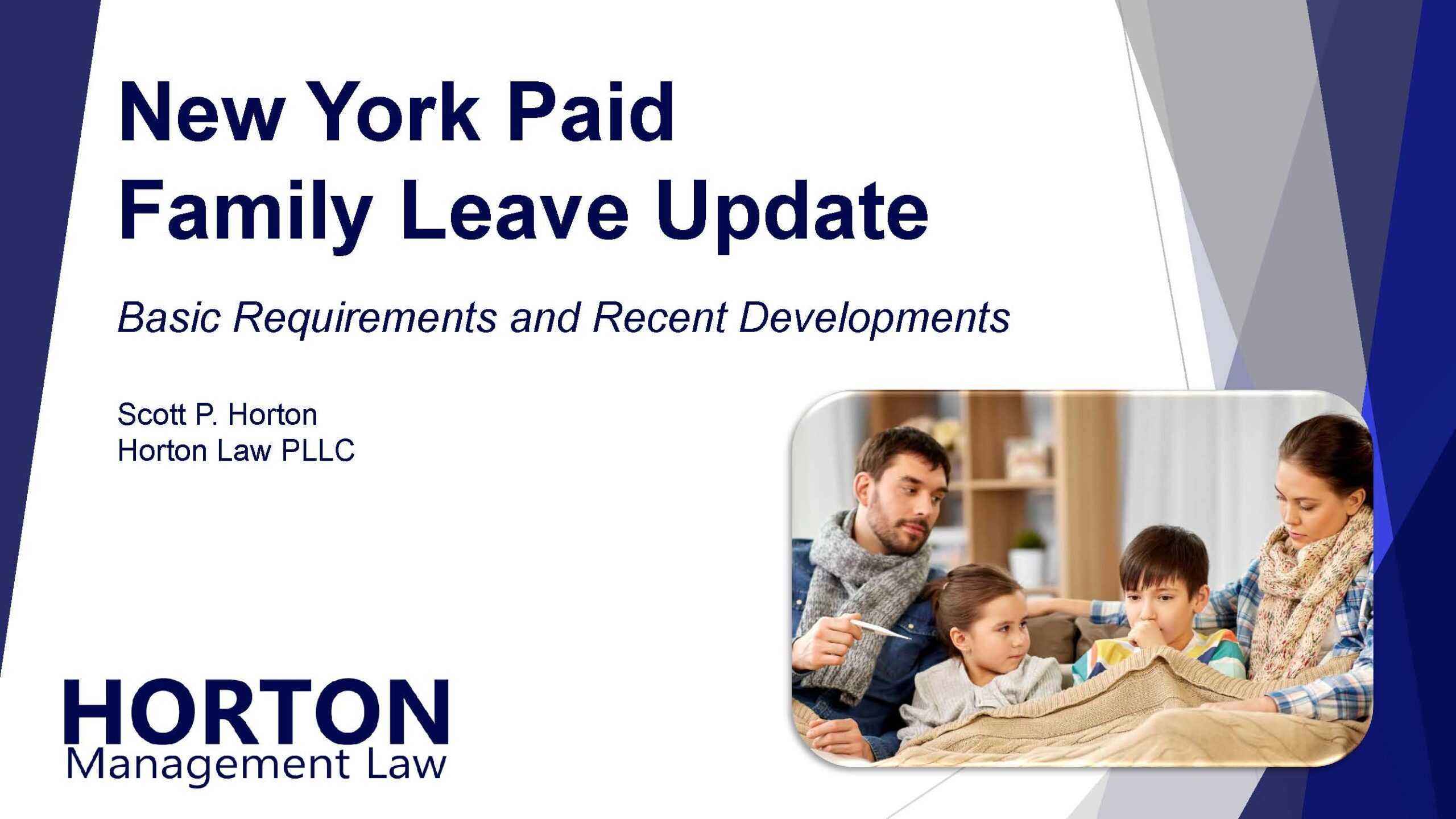New York continues to set trends in expanding employee rights. The state’s 2024-25 budget legislation includes two amendments that grant paid time off for certain employee pregnancy-related conditions. Employees may now take paid breaks to express breastmilk and paid leave for prenatal care. The details of these new entitlements are described below.
Employer Coverage
These new requirements are not limited to employers with a minimum number of employees. The paid break time for nursing mothers applies to all New York employers. However, along with the rest of the New York Paid Sick Leave Law, the paid prenatal personal leave provisions only apply to private (i.e., non-governmental) employers.
Paid Break Time for Breast Milk Expression
Section 206-c of the New York Labor Law previously required employers to provide reasonable unpaid break time for employees to express breast milk at work. The new amendment mandates that employers must provide 30 minutes of paid break time “each time such employee has reasonable need to express breast milk.” Employees may use any existing paid break or meal time for expressing breast milk if they need more than 30 minutes.
This expansion of employee rights is highly unusual in requiring paid break time. Existing break time requirements for meal periods only require unpaid time.
How Much Time?
The law does not further address how often an eligible employee may take the 30-minute paid break. There is no elaboration on when an employee should be considered to have “reasonable need to express breast milk.” The U.S. Department of Health & Human Services Office on Women’s Health indicates that “Women typically pump every 2 to 3 hours or around two to three times per 8-hour work period. Women who work 12-hour shifts may need to pump three to four times to maintain their milk production.” Accordingly, New York law arguably could give some employees two hours (or more) of paid break time each shift.
It is plausible that the Legislature only intended to require 30 minutes of paid break time per day. But that is not clear from the statutory language.
The only additional clarification is that eligibility extends for up to 3 years following childbirth. Presumably, this period would start over whenever the employee gives birth to a new child.
No Discrimination
Another open question is whether an employer may require a nursing mother to extend her work day to account for the break time. There is a risk that such a requirement would be considered discriminatory under existing anti-discrimination laws. Indeed, Labor Law Section 206-c itself provides, “No employer shall discriminate in any way against an employee who chooses to express breast milk in the work place.”
Effective Date
This amendment will take effect on June 19, 2024.
Paid Prenatal Personal Leave
The second major update comes to the New York Paid Sick Leave Law. In addition to existing sick leave obligations, the amendment introduces a separate requirement for “paid prenatal personal leave.” With this amendment, every non-governmental employer in New York will be required to provide an eligible employee with 20 hours of paid prenatal personal leave in any 52-week period.
Covered Leave
This leave is specifically designed for “health care services received by an employee during their pregnancy or related to their pregnancy, including physical examinations, medical procedures, monitoring, testing, and consultations with health care providers concerning the pregnancy.”
Based on the above-quoted language, it appears that only the pregnant employee is entitled to this form of leave. Non-pregnant parents-to-be are not covered.
Administrative Parameters
Employers must allow employees to take paid prenatal personal leave in hourly increments.
The law does not indicate that unused paid prenatal personal leave must carry over from year to year. It does clarify that employers are not obligated to pay out unused paid prenatal personal leave upon separation from employment.
Unlike traditional sick leave, which accrues based on hours worked by default, paid prenatal personal leave is available in full (up to 20 hours) when first needed.
Effective Date
This amendment will take effect on January 1, 2025.
Implications and Benefits for Employee Pregnancy
There are undoubtedly positive motivations behind these new laws designed to help accommodate work-related challenges pregnant employees and new mothers face. However, additional obligations to pay employees for time spent not working create new burdens for employers:
- An employee using prenatal personal leave in hourly increments could take time off on up to 20 different days leading up to their pregnancy.
- Nursing mothers may be entitled to 1-2 hours (and possibly more) of paid break time every day for up to three years following each birth.
It’s crucial to understand these changes thoroughly and prepare for their implementation. Employers will need to update policies, train human resources teams and supervisors, and take additional measures to ensure compliance.
(Will the NYS Department of Labor updated the state’s mandatory nursing mothers policy based on this amendment?)
For more employment law updates, sign up for the Horton Management Law email newsletter and follow us on LinkedIn.


